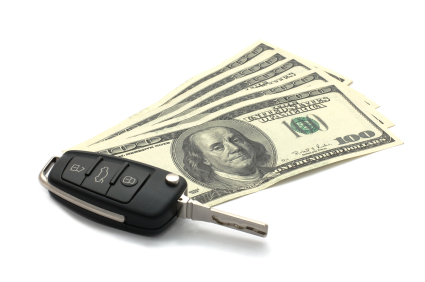If you sell vehicles, you have definitely heard this before. The value of the trade in is one of the major sticking points of any car purchase transaction. If you are not ready for this objection, you are killing your income and setting up your competitors to sell a vehicle.
Never start at the point of an objection to think about what you should do to handle an objection. Start at what potentially led to this objection in the first place. Think proactively and try to alter your process to remove or lessen this resistance before it occurs. Using word tracks and objection handling techniques alone is like treating a recurring sickness but never thinking of what might be causing the sickness in the first place. Your success and failure are often systemic, based upon the principal of cause and effect.
There are only so many categories that customer objections can fall into and the trade-in value is one of the major categories. Think of this as a water slide at an amusement park. You start at the top and slide effortlessly down into the water. In the sales process, we often have roadblocks that stop the customer from going effortlessly through the sales process, like a big roadblock on a water slide.
In most sales processes, salespeople and managers address the issues of the customer’s trade in towards the end of the process. You often fact find, select a new vehicle, present and demonstrate and more before you ever address what can often be the biggest sticking point in the sales process — and where a customer has major unspoken fear. There used to be a TV commercial where a customer walked into a muffler shop and screamed “I’m not going to pay a lot for this muffler.” Customers are not walking into dealerships screaming, “I am not going to let you give me too little for my trade in.” However, they are thinking this and to not address the elephant in the room up front is a recipe for disaster. This is the bad, old school “avoid and evade” sales process. I have a saying: “You can’t sweep dog poop under the rug and expect the stink to go away.”
After meeting and greeting a customer and entering into conversation and investigation, you must segue to the trade in first rather than last. I would invite you to take a 3×5 card out and tell the customer that you want to walk with them briefly over to their current vehicle for a couple of reasons. First, you want to get all the information and a description of the vehicle so that later on if they want a market value you will have all the information and that will save them lots of time. Secondly, while you are getting the information with them, ask them a few questions about what they like and don’t like about the vehicle and what they are looking for, and usually, based upon those questions, you come up with ideas that can save them money. Save time and save money — these are two things everyone wants to do. You are talking their language and expressing this in a language called “HFG” — Hope For Gain. Nobody buys a vehicle without the feeling of bettering his or her current situation.
If you utilize the trade in up front as a positive, rather than waiting until the end to hopefully avoid a negative, you will gain sales traction through better information, more personalized relationships and laser focusing your sales process. You will be able to utilize two different spectrums of selling: patterns and contrast. You will first recognize a customer’s buying patterns. People are pattern repeaters. People like to do what they have done and recognize from the past. This gives them familiarity, comfort and consistency. On the other end, you will be able to fully enhance the sales process by contrasting the new to the old vehicle and how this new situation is familiar but much better. You can contrast any pain they may have while following all patterns that create pleasure.
It is extremely important to realize that selling is not just about a process or road to the sale. Selling at a high level is about connecting your customer’s hearts and minds while utilizing the sales process. I have often heard misguided managers instruct salespeople that if they just follow the sales process they will sell cars. This is absolutely not true. You can be a robotic drone that gives data to customers, or you can be a customer centered, laser-guided, problem-solving trusted advisor who takes customers to a higher level of buying emotion and thought process.
Your sales process must be psychologically and emotionally based to provide leverage. Without decision-making leverage, the customer will simply walk through your sales process, dismiss you and go somewhere else and buy. You are a salesperson, not a sales process. Combine your people skills with your sales skills. The trade in is a perfect place to utilize these skills together.
For a free special report, “Trade-In Tips,” email me at info@tewart.com with “Trade-In Tips” in the subject line.

